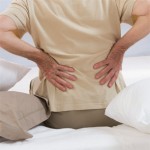The individuals in the experimental group wore the Spinal Underwear for three months, and the control group remained on the waiting list for three months. The same blinded examiner evaluated both groups at the beginning and end of treatment. The investigators found the Spinal Underwear was able to reduce low back pain in healthcare workers, as measured by VAS. It also reduced Somatosensory Amplification Scale (SSAS) scores, as well as increasing lumbar spine range of motion and reducing neck pain.
Their results imply that musculoskeletal symptoms can be influenced by posture and somatization.
ad goes here:advert-1
ADVERTISEMENT
SCROLL TO CONTINUE
Lara C. Pullen, PhD, is a medical writer based in the Chicago area.
Reference
ad goes here:advert-2
ADVERTISEMENT
SCROLL TO CONTINUE
- Hagiwara Y, Yabe Y, Yamada H, et al. Effects of a wearable type lumbosacral support for low back pain among hospital workers: A randomized controlled trial. J Occup Health. 2017 Jan 28. doi: 10.1539/joh.16-0203-OA. [Epub ahead of print]
